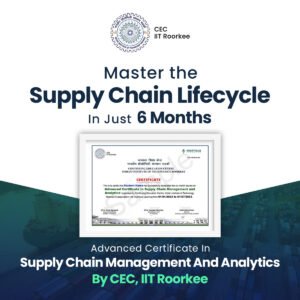Businesses rely on demands to modify and establish their supply planning. While this sounds like an easy one-step process, in reality, sales and operations planning or S&OP merges a variety of different facets of business in order to streamline the overall functioning of the enterprise.
In this blog, we dive into the intricacies of sales and operations planning and why it is important for you to know about it.
What is Sales and Operations Planning (S&OP)?
Sales and operations planning (S&OP) refers to an integrated business management process designed to balance supply and demand. The S&OP process involves the integration of several areas, such as marketing, product development, sales, procurement, manufacturing, accounting, and finance, in order to meet the organisational and financial goals of the company. Essentially, S&OP helps businesses align their daily operations with their broader corporate strategy.
Generally, the S&OP process occurs every month and could involve artificial intelligence and S&OP software tools for better execution.

Top Supply Chain Analytics Courses
Process of Sales and Operations Planning
Sales and operations planning processes vary from company to company. However, they almost always contain the following steps:
- Data gathering: Needless to say, the first step involves gathering existing data such as inventory level, cash on hand, sales, and so on. This is also the ideal time to analyse and assess these data.
- Demand planning: Once all the essential data is gathered, updated statistical forecasts can be generated. Therefore, by bringing together new market trends, one-time sale events, price changes, and so on, consensus-based demand planning can be done.
- Supply planning: This step involves creating a blueprint that will help meet customer expectations like increased demands, on-time delivery, hassle-free returns process, etc. Supply planning also helps understand any kind of financial or operational constraint a company might be facing that will lead to them not being able to fulfil their objectives.
- Review and reconciliation: Once both the demand and supply plans are generated, key decision-makers review the plans and finalise every detail. Furthermore, simulation tools are also used in order to fine-tune the blueprint and make them more reproducible in real-time.
- Finalisation: The last step is sending the S&OP process to higher management for final approval and subsequent implementation.
Top 5 Benefits of Sales and Operations Planning
Sales and operations planning provides substantial stability to a business. The top benefits of S&OP are:
- Improved decision-making: With the help of AI and various other software tools, business owners can run simulations to check the viability of their demand and supply plans. This will help with better decision-making since individuals will be more aware of the consequences of their planning.
- Higher profits: With good S&OP, companies can minimise waste, excessive inventory, and warehousing space wastage, all of which will result in higher profits. Furthermore, S&OP also helps meet customer expectations increasing the profitability of a company.
- Better collaboration: Since sales and operation planning involves an integrated approach, different departments under the same business collaborate in a fruitful way and work towards the same goal.
- Continual improvement: S&OP usually takes place on a monthly basis. Hence, companies can continuously modify and improve based on the latest data and statistics. This helps businesses scale up while building a reliable foundation for themselves.
- Shorter planning duration: Due to the advancement of technology, S&OP has now become much shorter as most of the data gathering, analysis, and assessment is done by software tools in a very quick time. This greatly reduces the time required to plan for the next upcoming demand and supply chain.
Current Trends in S&OP
Just like any other aspect of business, even sales and operations planning have been evolving pretty fast. Some of the current trends in S&OP are:
- Improving planning and execution timings to support more frequent S&OP.
- Integrating AI and the Internet of Things (IoT) with sales and operation planning.
- Enhancing multi-tier collaborations and visibility through technology.
- Investing in systems that can conduct rapid supply chain plan analysis, like products with similar demand profiles, supply sources, and so on.
Conclusion
In conclusion, the success of a business depends on a balanced demand and supply chain. This chain, in turn, can be balanced through efficient sales and operations planning (S&OP). Hence, knowing about S&OP processes is essential for both business owners and those who want to build expertise in this field.
This is where Imarticus comes in. The platform provides a comprehensive professional certification course on Sales and Operations Planning (S&OP) taught by the esteemed faculty at IIT Roorkee. In addition to being taught by experts, the students will also have hands-on learning with real-world supply chain management projects, which will further grow their exposure and knowledge. At the end of the course, an official certification will be provided by IIT Roorkee, which will help candidates enter the operations and supply chain industries with ease.








